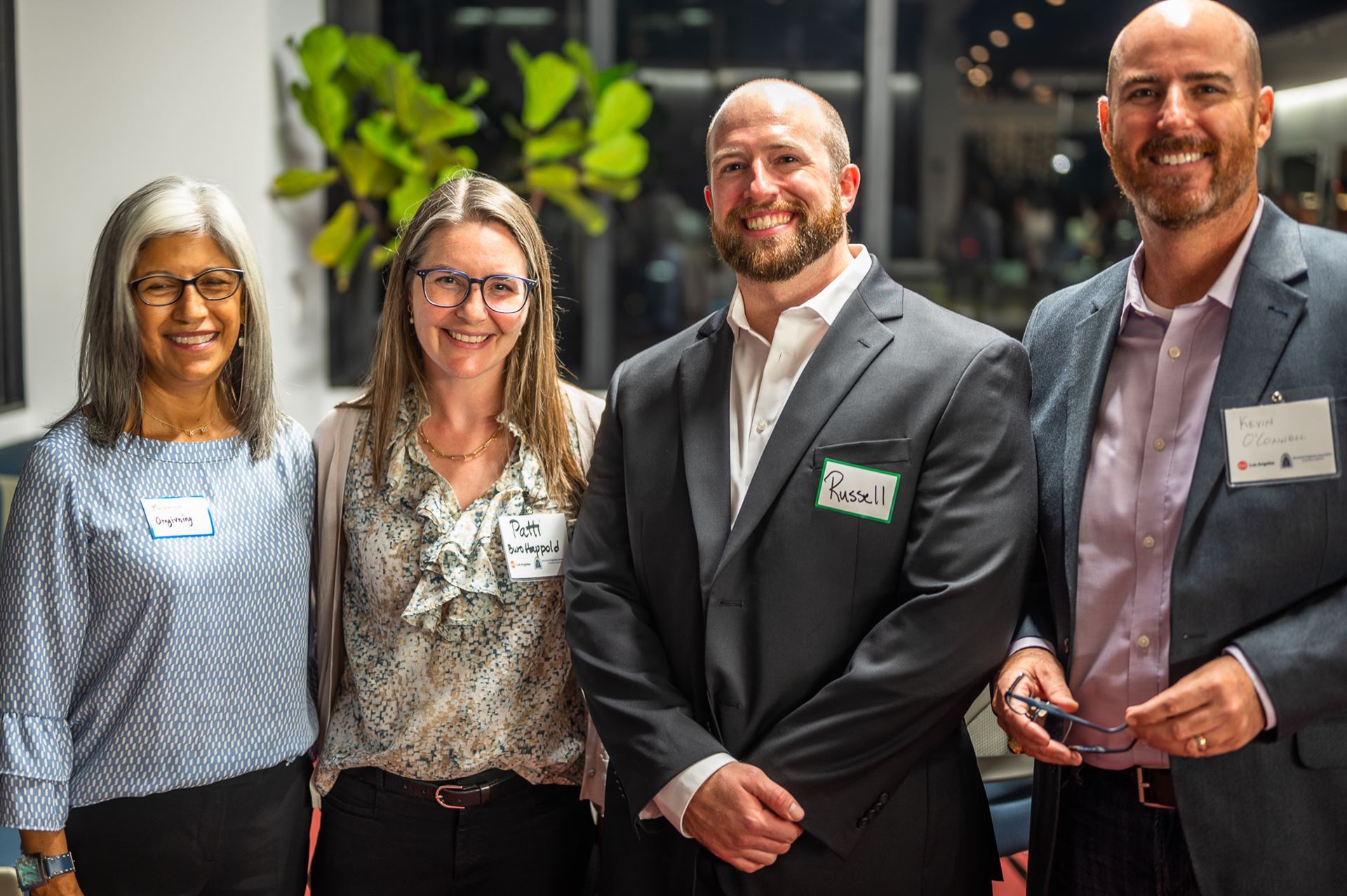On Tuesday, October 18th, the SEAOSC and AIA LA communities came together at the Buro Happold office in DTLA to delve deep into recent adaptive reuse projects. The event offered an opportunity to engage on the importance of adaptive reuse structures in preserving culture, promoting sustainability, and cultivating existing spaces--including for new housing.
Roberto Vazquez (Omgivning), Dr. Luis Toranzo (KPFF), and Russell McLellan (SGH) presented three case studies, each with their own challenges: the Lane Building, a non-ductile concrete building built in the 1920’s with extreme torsion issues; the Historic San Jose City Hall, a neglected but beautiful 1950’s curved structure repurposed to provide new housing; and 2. N Lake, a 1980’s (pre-Northridge) moment frame building in Pasadena with a proposed damper solution to increase ductility.
The three presentations were emblematic of a common theme: adaptive reuse is not only vital to maintain and enhance historic architecture, it is quite often the most sustainable way to create a new building space and provides a concrete solution to Los Angeles’s current housing crisis. The panel of presenters provided different engineering and architectural perspectives on what goes into revitalizing existing structures and bringing them up to code (or to the peer reviewers’ standards).
With such a successful turnout, SEAOSC and AIA LA plan to continue the series in 2023 and expand to touch on topics of policies, tools, and case studies to continue to build collaboration between engineers and architects.
Images by Genevieve Graham






See all event photos here.

